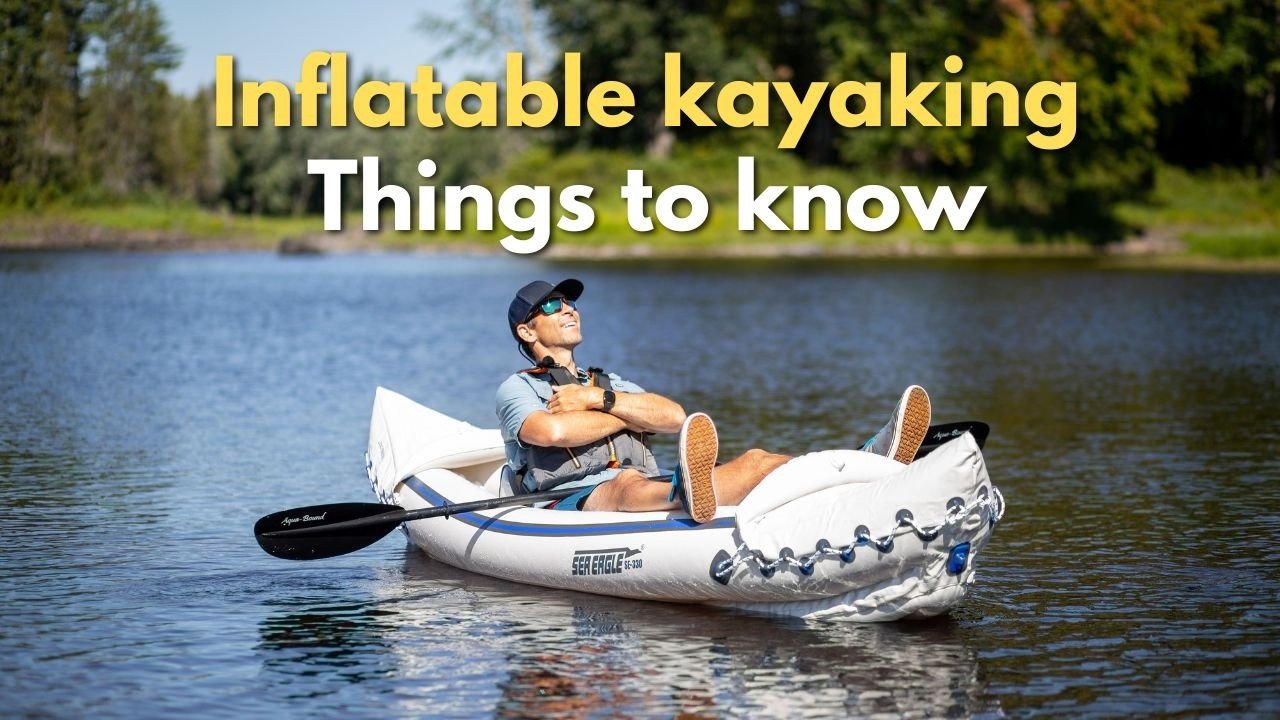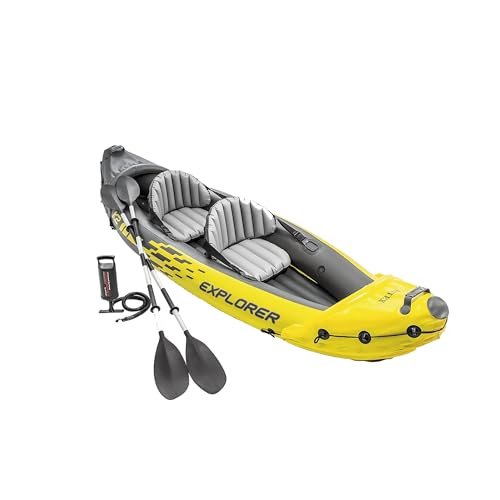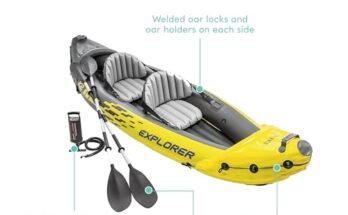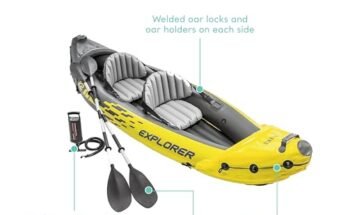Want to enjoy kayaking more and feel confident on the water? Improving your kayaking skills doesn’t have to be hard or overwhelming.
Whether you’re just starting out or have some experience, there are simple tips that can make a big difference. You’ll discover easy ways to boost your technique, increase your strength, and stay safe. Keep reading, and soon you’ll be paddling with more control and having more fun every time you hit the water.

Choosing The Right Kayak
Picking the right kayak is important for your safety and fun. The right kayak fits your needs and skill level.
There are many types of kayaks. Knowing about them helps you choose the best one for you.
Types Of Kayaks
Kayaks come in different shapes and sizes. Each type is made for a specific water activity.
- Recreational Kayaks:Best for calm water and easy paddling.
- Touring Kayaks:Designed for long trips and rough water.
- Whitewater Kayaks:Made for fast rivers and rapids.
- Inflatable Kayaks:Easy to carry and store but less durable.
- Fishing Kayaks:Equipped with features for anglers.
Matching Kayak To Skill Level
Choose a kayak that fits your experience. Beginners need stable and easy-to-use kayaks.
Intermediate and advanced paddlers can try faster and more challenging kayaks. This helps improve skills safely.
- Beginners: Recreational kayaks with wide hulls for stability.
- Intermediate: Touring kayaks with better speed and tracking.
- Advanced: Whitewater or sea kayaks for technical skills.
Essential Gear And Accessories
Having the right gear improves your kayaking experience. Safety and comfort are key factors.
Some gear is necessary for all skill levels and conditions. Accessories can also help you enjoy kayaking more.
- Personal Flotation Device (PFD): Always wear a life jacket.
- Paddle: Choose one that fits your height and kayak type.
- Spray Skirt: Keeps water out of the kayak in rough conditions.
- Helmet: Needed for whitewater kayaking.
- Dry Bags: Keep your belongings safe and dry.
Mastering Basic Techniques
Learning to kayak well starts with the right basic skills. These skills help you control your kayak better.
Focus on simple techniques like paddling, balancing, and steering. Practice each skill to improve your confidence.
Paddling Strokes
Good paddling strokes give you power and speed. Use the right stroke for each situation to move smoothly.
- Forward Stroke:Pull the paddle through the water near the kayak to move forward.
- Backward Stroke:Push the paddle backward to slow down or go backward.
- Draw Stroke:Pull the paddle sideways to move the kayak toward the paddle.
- Sweep Stroke:Make a wide arc with the paddle to turn the kayak.
Body Position And Balance
Your body position keeps the kayak steady. Sit straight and lean slightly forward for better control.
| Body Part | Position | Purpose |
| Back | Straight | Maintains balance |
| Hips | Centered | Keeps kayak stable |
| Feet | Firm on footrests | Helps steer and balance |
| Head | Looking forward | Improves direction awareness |
Steering And Turning
Turning the kayak uses paddle strokes and body movement together. Control your direction smoothly.
Try these tips for better steering:
- Use sweep strokes on one side to turn.
- Lean your body slightly in the turn direction.
- Use small backward strokes to slow the turn.
- Practice turns in calm water before trying rough conditions.
Building Strength And Endurance
Kayaking needs both strength and endurance to paddle well. Training these skills helps you paddle longer and with more power.
Focus on exercises that build muscles and improve your heart and lungs. This will make your kayaking trips easier and more fun.
Targeted Exercises
Work on muscles used in kayaking. This includes your arms, shoulders, back, and legs. Strong muscles improve your stroke and control.
- Push-ups to strengthen chest and arms
- Pull-ups for back and shoulders
- Squats to build leg power
- Dumbbell rows to target upper back
- Plank holds for full body strength
Improving Core Stability
Your core stabilizes your body while paddling. A strong core helps you balance and prevents injury. Try exercises that focus on your abs and lower back.
| Exercise | Benefits |
| Plank | Builds overall core strength |
| Russian Twists | Improves rotational stability |
| Leg Raises | Strengthens lower abs |
| Superman Holds | Targets lower back muscles |
Cardio Training For Kayakers
Cardio workouts help your heart and lungs work better. This lets you paddle longer without getting tired. Try different cardio exercises to find what suits you.
- Running or jogging
- Cycling on flat or hilly roads
- Swimming for full-body cardio
- Rowing machine to mimic paddling
- Jump rope for quick bursts of energy
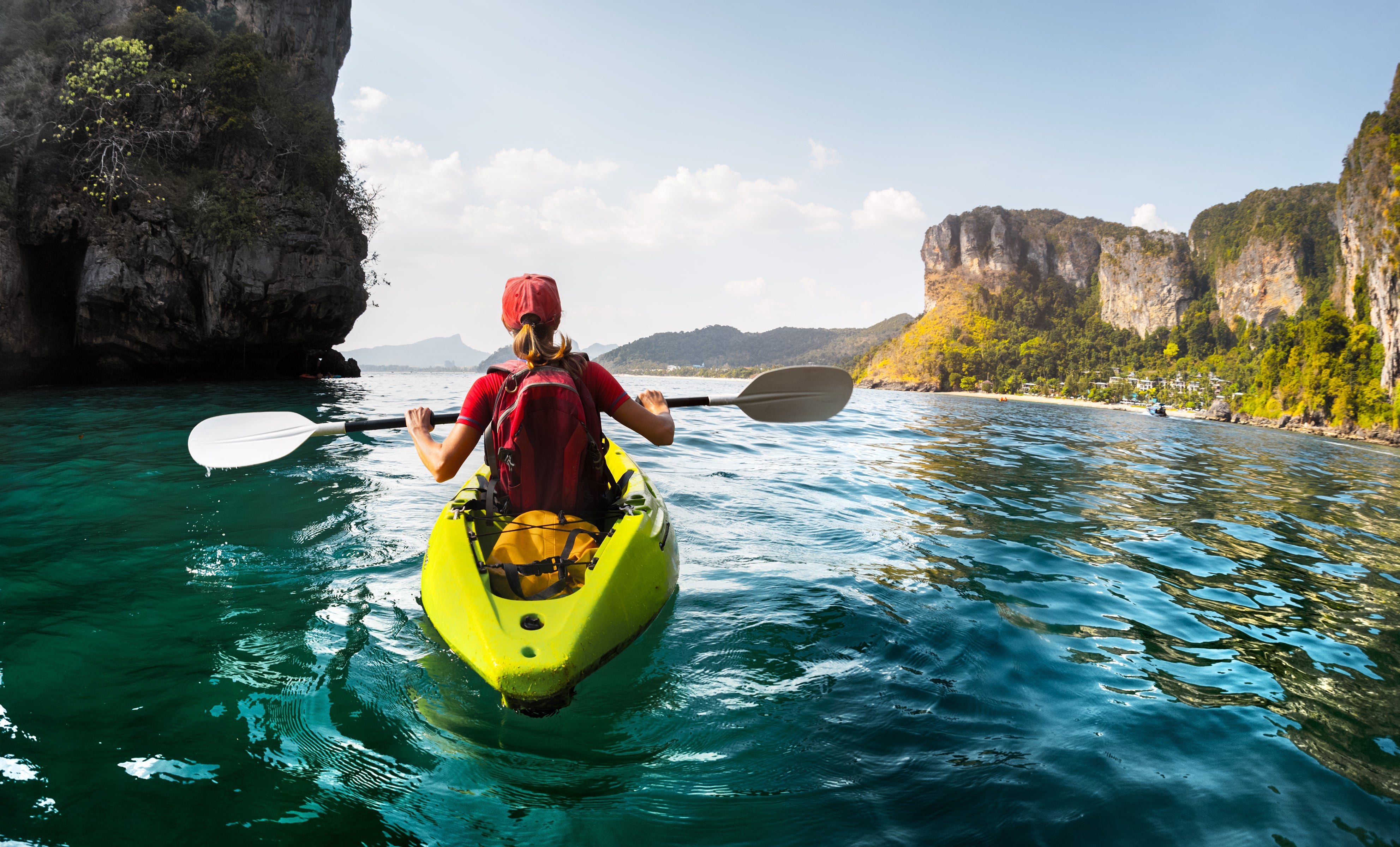
Enhancing Safety Skills
Kayaking is a fun water sport that needs good safety skills. Learning these skills keeps you safe on the water.
Improving your safety skills helps you enjoy kayaking more and avoid accidents.
Self-rescue Techniques
Knowing how to rescue yourself if you fall out is very important. Practice getting back into your kayak in calm water first.
Use techniques like the paddle float rescue or the cowboy scramble to get back in safely.
- Stay calm and hold your paddle
- Use a paddle float for extra support
- Pull yourself onto the kayak from the side
- Practice rescue moves regularly
Reading Water Conditions
Look at the water before you start kayaking. Check if the water is calm or rough.
Watch for currents, waves, and obstacles like rocks or branches. These can affect your safety.
- Check weather and water reports
- Notice water flow speed and direction
- Avoid areas with strong currents or debris
- Be aware of changing water conditions
Using Safety Equipment
Safety gear protects you and helps in emergencies. Always wear a life jacket that fits well.
Carry extra gear like a whistle, helmet, and a paddle leash for added safety.
- Wear a properly fitted life jacket
- Use a helmet in rough or rocky areas
- Attach a leash to your paddle
- Bring a whistle to signal for help
Practicing Regularly And Setting Goals
Getting better at kayaking takes time and effort. Practicing often helps you improve your skills. Setting clear goals keeps you focused and motivated.
By combining regular practice with goal setting, you can see steady progress in your kayaking abilities. This approach makes learning easier and more fun.
Creating A Training Schedule
Plan your kayaking sessions to practice regularly. A training schedule helps you stay consistent and make progress. Pick days and times that work best for you.
Include different types of practice like paddling techniques, balance exercises, and endurance training. Change your routine to keep it interesting.
- Set specific days for kayaking each week
- Mix easy and challenging sessions
- Allow time for rest and recovery
Tracking Progress
Keep a record of your kayaking activities to see how you improve. Write down what you practice and how you feel after each session. This helps you find what works best.
Tracking progress also keeps you motivated. You can celebrate small wins and adjust your goals as needed to keep moving forward.
- Note the date and duration of each practice
- Record new skills or improvements
- Write down challenges or difficulties
- Review your notes weekly or monthly
Joining Kayaking Communities
Connect with other kayakers to learn and share experiences. Communities offer advice, support, and chances to practice together. Being part of a group makes kayaking more enjoyable.
You can join local clubs or online groups. Group activities help you stay motivated and meet people who share your interest.
- Find local kayaking clubs or meetups
- Join online forums or social media groups
- Attend group paddling events or workshops
- Share your progress and ask questions

Learning From Experts
Improving your kayaking skills is possible when you learn from experts. Their experience can guide you to paddle better.
Experts have knowledge that can make learning easier. Let’s explore how you can learn from them effectively.
Taking Lessons
Lessons from skilled instructors can boost your kayaking skills. They provide direct feedback and hands-on training.
- Find a local kayaking school.
- Check instructor qualifications.
- Enroll in beginner or advanced classes.
Watching Tutorials
Video tutorials are a great resource for learning. Watching them helps you visualize techniques and understand kayaking better.
Here is a simple HTML embed example:
Attending Workshops
Workshops offer immersive learning experiences. They combine theory and practice to enhance your kayaking skills.
| Workshop Type | Duration | Focus |
| Beginner | 1 Day | Basic Skills |
| Intermediate | 2 Days | Advanced Techniques |
| Expert | 3 Days | Competitive Skills |
Exploring Different Water Environments
Kayaking offers a chance to explore various water environments. Each setting presents unique challenges and experiences. Learning about these environments can improve your skills.
Whether you’re on calm lakes, rushing rivers, or open seas, each requires different techniques. Let’s explore how to get better at each one.
Flatwater Kayaking
Flatwater kayaking is ideal for beginners. It takes place on calm waters like lakes or slow rivers. Focus on mastering your paddling technique in this environment.
- Practice your stroke consistency
- Learn to steer using small paddle adjustments
- Focus on balance and posture
Whitewater Kayaking
Whitewater kayaking is more challenging due to fast-moving waters. It requires quick reflexes and strong paddling skills. Safety is crucial in this environment.
| Skill | Importance |
| Swift maneuvering | High |
| Reading river currents | Medium |
| Using safety gear | Essential |
Sea Kayaking Challenges
Sea kayaking involves open waters and can be demanding. You must be prepared for waves, tides, and changing weather conditions.
Check weather forecasts and sea conditions before heading out. Always wear a life vest and inform someone about your kayaking plan.
Frequently Asked Questions
How Can I Improve My Kayaking Paddling Technique?
Focus on smooth, controlled strokes using your core muscles. Keep your arms relaxed and maintain a steady rhythm for efficient paddling.
What Are The Best Exercises To Enhance Kayaking Strength?
Incorporate core workouts, shoulder presses, and cardio. These exercises build endurance and strength for better kayaking performance.
How Do I Maintain Balance While Kayaking?
Keep your body centered and low. Use your hips to counterbalance, and practice on calm water to build stability.
What Gear Is Essential For Better Kayaking?
Wear a life jacket, use a quality paddle, and dress appropriately. Proper gear improves safety and paddling efficiency.
Conclusion
Practice often to build your kayaking skills step by step. Stay safe by wearing the right gear and checking the weather. Try different waters to gain confidence and learn new techniques. Watch experienced kayakers and ask questions to improve. Keep your kayak in good shape for better performance.
Enjoy the journey, and remember, patience helps you grow. Kayaking gets easier with time and effort. You will feel proud as you paddle smoothly and explore nature. Keep paddling!
